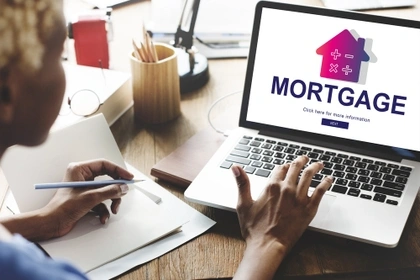How do buy-to-let mortgages work?
Buy-to-let mortgages are similar to normal residential mortgages however they are some differences, as they’re specifically designed for landlords.
What is the difference between a buy-to-let mortgage and a residential mortgage?
A buy-to-let mortgage differs from residential mortgage because it:
- has stricter lending criteria due to increased risk of non-payment (tenants may potentially fall behind on rent)
- usually comes with higher fees and interest rates
- requires a larger deposit
Are buy-to-let mortgages interest only?
Most buy-to-let mortgages are interest-only, which means that you only pay the capital each month – not the interest. This can make your monthly repayments smaller, but you need to have a savings plan in place ready for when the mortgage term ends. As when it finishes, the interest becomes payable all at once.
However, it may be possible to get a residential mortgage on a buy-to-let property. Speak to a mortgage adviser if you’re interested in this. They’ll be able to help you work out whether you’re eligible.
How much deposit do you need for a buy-to-let mortgage?
You’ll most likely need a larger deposit for a buy-to-let mortgage than a residential mortgage – around 25% or more. This is because lenders see it as riskier to lend to you as a landlord.
There’s no guarantee you’ll have tenants for the duration of your mortgage - or tenants who’ll always pay on time. So there may be periods where you’ll have to fork out yourself to cover the difference.
How much can you borrow?
How much the mortgage provider is willing to lend you depends on your individual circumstances and the amount of rental income you expect to receive. Normally this needs to be higher than your mortgage payment and will be based on a realistic representation of what they think you can charge for your property.
What are the buy-to-let mortgage criteria?
The buy-to-let mortgage criteria can be stricter than with a residential mortgage because you’re considered as more of a risk to lend to. For instance, providers will normally ask that you:
- have the financial means to invest
- are already a homeowner
- have a good credit history
- have a large deposit of around 25%-40%
- will be under the age of 70/75 when the mortgage term ends
- have earnings of around £25,000 per year, or over
How to get a buy-to-let mortgage
Follow these two steps to get a buy-to-let mortgage:
- speak to a mortgage broker and/or mortgage adviser
- go direct, using a bank or specialist lender
1. Speak to a mortgage broker and/or mortgage adviser
Mortgage brokers and advisers are experts in the property market. They’ll be able to advise you on how to get a buy-to-let mortgage, whether your application is likely to be accepted, and by which lenders.
2. Go direct
Mortgage brokers may not be able to search all the deals on the market for you, and some rates are only available directly. For this reason, you should consider also speaking to banks or specialist buy-to-let lenders to see what they offer.
Costs you’ll need to consider when getting a buy-to-let mortgage
As with any mortgage, there are lots of different costs involved, so it’s best to speak to a mortgage adviser to see which apply to you. We explain the eight main costs below:
1. Lettings agency fees
If you choose to let your property out through a lettings agency there will be fees to pay. Their services will vary from providing full management of the property to just advertising for new tenants. Costs will vary from one agency to the next.
2. Stamp duty
Stamp duty is classed as a type of tax that you pay HMRC when you buy a property over a certain value in England and Northern Ireland. From 1st October 2021, the thresholds will be:
- £125,000 for residential properties
- £150,000 for non-residential properties and land
You may have to pay more stamp duty on buy-to-let properties than residential properties. Visit the government’s website to find out how much stamp duty you’ll be charged, or whether you are eligible for tax relief.
3. Overall cost of the mortgage
You’ll need to pay mortgage interest and fees, costs to set up the mortgage, solicitor fees, and other administrative fees associated with buying a property.
4. Missed mortgage payments
You can’t rely on always having tenants to pay for your mortgage, so you should plan ahead for when the property is unoccupied, to avoid missing your mortgage payments. Many landlords save cash each month to cover their mortgage payments when they don’t have an income from tenants.
It may be worth speaking to an independent financial adviser to establish the best way of covering these potential gaps.
5. Landlord insurance
You’ll need to get building insurance, liability insurance and it’s advisable to get contents insurance too. This is a cost factor that many people forget to take into account and can vary depending on the property.
6. Maintenance and repair costs
If anything goes wrong with the property, it’ll be your job to fix it. You’ll need to have funds available for emergency costs like boiler repairs and replacing a broken oven, for example.
7. Tax on rental income
The rent you receive from your tenants counts as income, so you may have to pay tax on it. The amount will depend on your tax band.
8. Capital gains tax
This is something you may have to pay if you sell a property that's not your home. You can calculate how much capital gains tax you'd need to pay by visiting the government's website.
Disclaimer: We make every effort to ensure content is correct when published. Information on this website doesn't constitute financial advice, and we aren't responsible for the content of any external sites.






